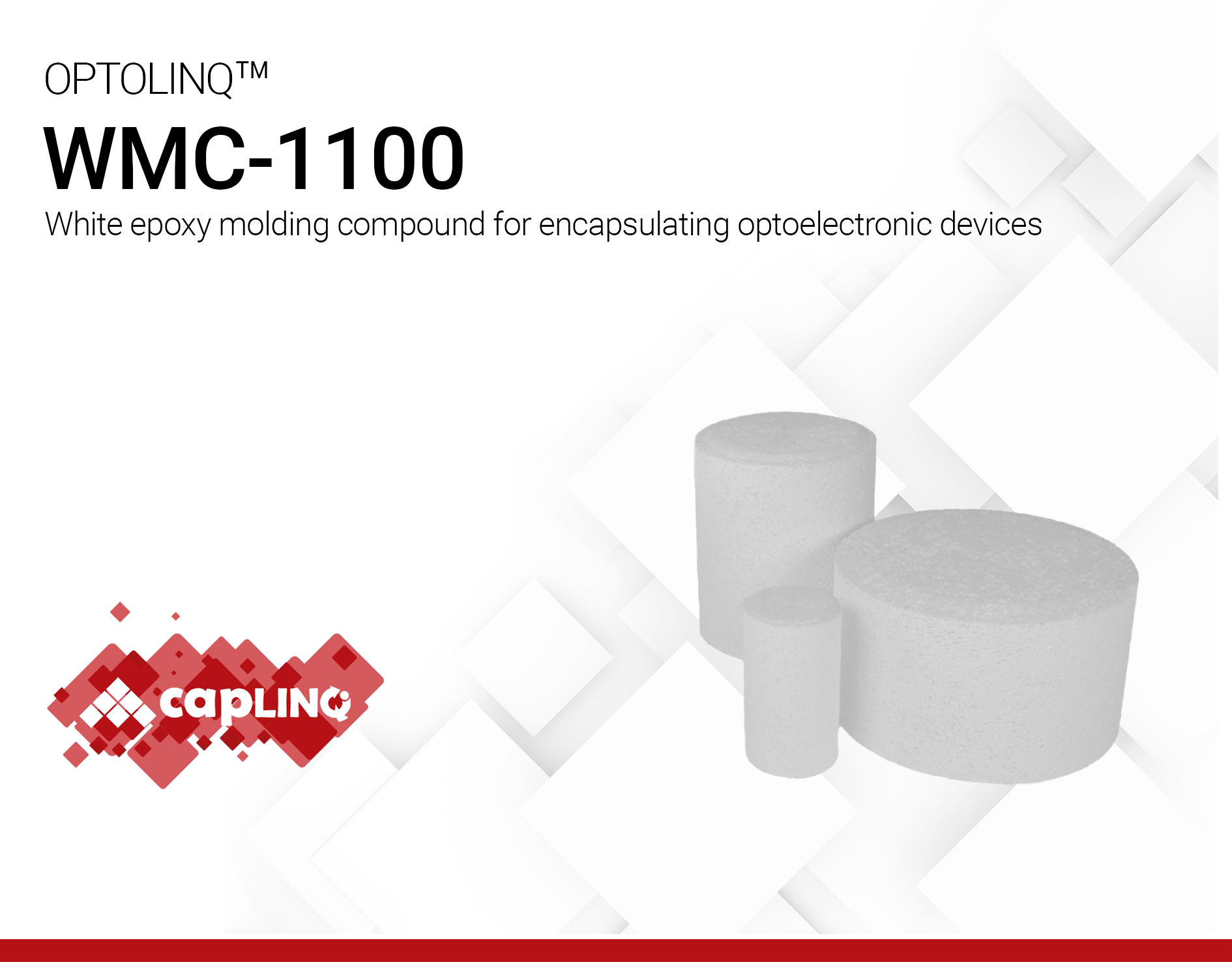OPTOLINQ WMC-1100| White Mold Compound
- White
- High reflectance
- Excellent reliability
Product Description
OPTOLINQ WMC-1100 is a white epoxy molding compound specifically designed for the encapsulation of optoelectronic devices. With its high spiral flow, WMC-1100 exhibits outstanding moldability, which allows for precise and intricate molding of optoelectronic devices and ensures consistent and high-quality production. This on top of its high thermal resistance and excellent reliability make WMC-1100 an ideal choice for optoelectronic device encapsulation.
Technical Specifications
| General Properties | |||||||
| Color Color The color | White | ||||||
| Specific Gravity Specific Gravity Specific gravity (SG) is the ratio of the density of a substance to the density of a reference substance; equivalently, it is the ratio of the mass of a substance to the mass of a reference substance for the same given volume. For liquids, the reference substance is almost always water (1), while for gases, it is air (1.18) at room temperature. Specific gravity is unitless. | 2.1 | ||||||
| Physical Properties | |||||||
| Spiral Flow @ 175°C | 70-160 cm | ||||||
| Mechanical Properties | |||||||
| |||||||
| |||||||
| |||||||
| Thermal Properties | |||||||
| |||||||
| |||||||
| Glass Transition Temperature (Tg) Glass Transition Temperature (Tg) The glass transition temperature for organic adhesives is a temperature region where the polymers change from glassy and brittle to soft and rubbery. Increasing the temperature further continues the softening process as the viscosity drops too. Temperatures between the glass transition temperature and below the decomposition point of the adhesive are the best region for bonding. The glass-transition temperature Tg of a material characterizes the range of temperatures over which this glass transition occurs. | 150 °C | ||||||
| Curing Conditions | |||||||
| |||||||
| |||||||
| Transfer Pressure | 10-30 kg/cm2 | ||||||
| Transfer Time | 40-100 s | ||||||
Additional Information
Processing Instructions
- Before use, allow WMC-1100 to reach room temperature for a minimum of 8 hours, ensuring the bag remains unopened to prevent moisture contamination.
- Apply an outer releasing agent, such as silicones or fluorinated compounds, to the mold surface to facilitate easy release from the mold dies.
- Prior to molding with WMC-1100 or any new material, the mold should be cleaned thoroughly. For proper mold conditioning, the initial three shots should be cured for 5–10 minutes. After this initial conditioning period, you can reduce the curing time to a level that provides sufficient hot hardness for effective release.
Storage and Handling
OPTOLINQ WMC-1100 is available in pressed pellets in a wide range of sizes to meet specific customer needs. To ensure product integrity, keep it away from oxidizing materials. For long-term storage, maintain a cold environment, ideally at –20 °C or lower. The shelf life under this condition is 12 months.



